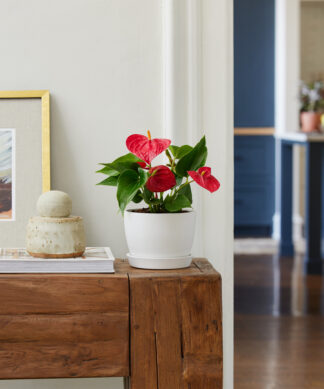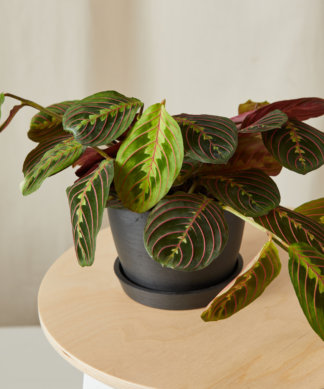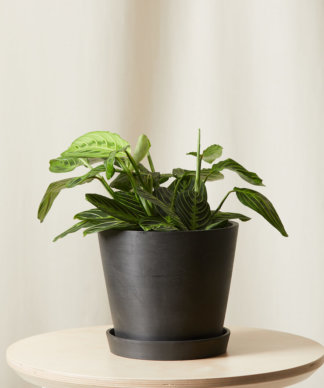How to care for your Lipstick Plant
Use these instructions to care for a Lipstick Plant. This guide will tell you how to water a Lipstick Plant; its light, temperature, humidity preferences and any additional care it might need to help it grow.
Lipstick Plant
Lipstick plants are very adaptable to all lighting conditions, from direct sunlight to low and artificial light. Your lipstick plant will perform best in bright, indirect light or when allowed to receive direct morning sun. You may notice slowed growth and a lack of flowers in lower lighting conditions.
Though the thick, leathery leaves of your lipstick plant make it resilient to a few skipped waterings, the plant thrives when it receives consistent moisture and is planted in a well-aerated, coarse potting mix. Water your lipstick plant when the top 25% of soil is dry. Water thoroughly, and be sure to empty the saucer of any excess water to prevent root rot.
Hailing from a tropical region, the lipstick plant appreciates high humidity environments. Group it with other plants, place a humidifier nearby, or use a pebble tray to raise the humidity. Misting is not recommended as the plant is susceptible to foliar fungal issues.
A healthy lipstick plant requires temperatures above 65°F. Avoid cold drafts and sudden temperature changes.
For best results, use a liquid houseplant fertilizer diluted to half the recommended strength every other week during the spring and summer and once per month in the fall and winter. Never apply fertilizer to dry soil; always make sure the soil is damp before feeding your plant.
Your lipstick plant is considered to be non-toxic to pets and humans.
When watering, avoid getting water on the leaves of the plant and instead pour water directly over the soil surface or bottom-water your plant. Lipstick plants are susceptible to foliar fungal issues and it’s important to minimize water on the leaves. We also recommend removing spent flowers which can cause Botrytis leaf blight if left to decay on the plant.














